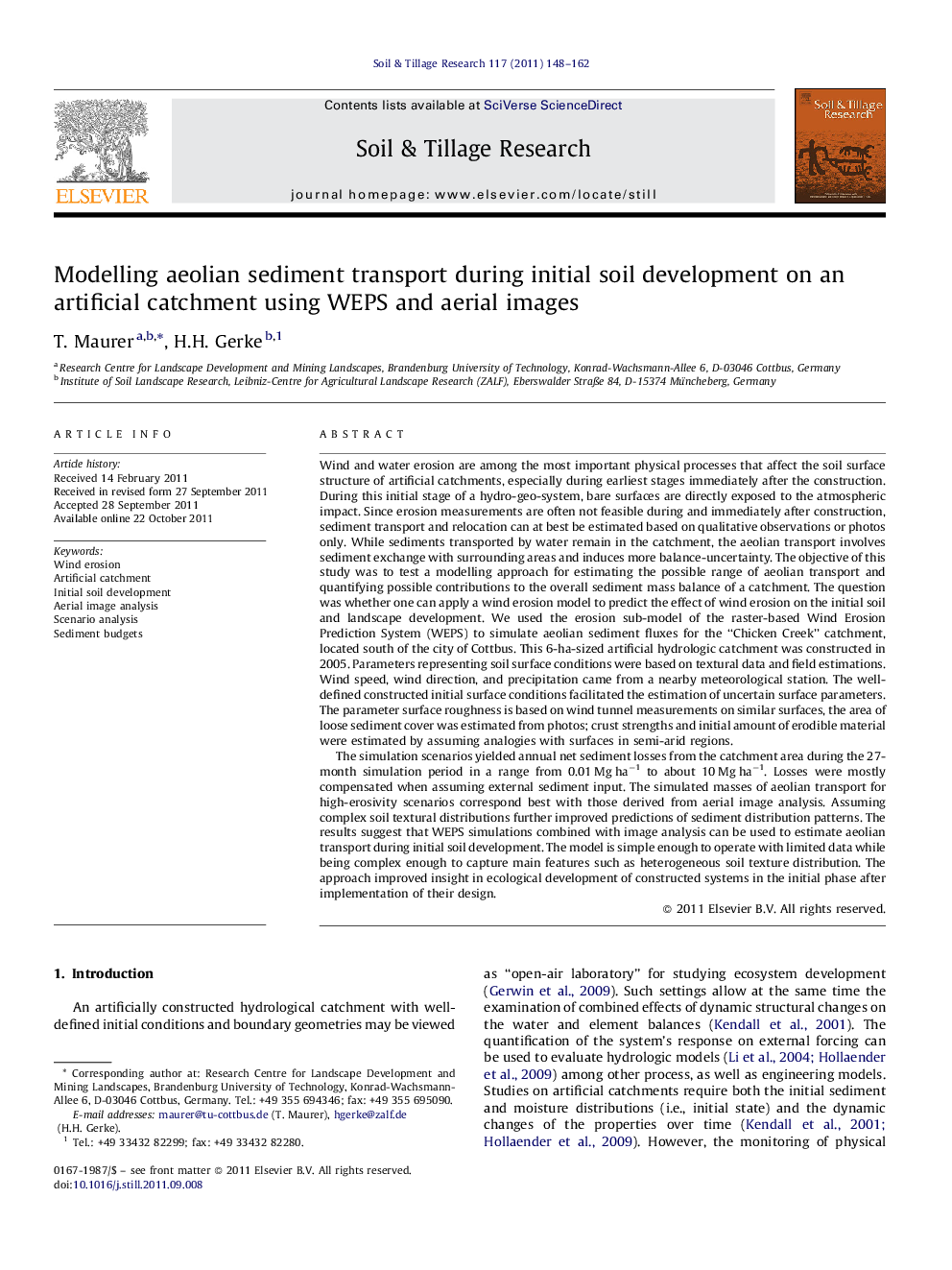| کد مقاله | کد نشریه | سال انتشار | مقاله انگلیسی | نسخه تمام متن |
|---|---|---|---|---|
| 306046 | 513068 | 2011 | 15 صفحه PDF | دانلود رایگان |

Wind and water erosion are among the most important physical processes that affect the soil surface structure of artificial catchments, especially during earliest stages immediately after the construction. During this initial stage of a hydro-geo-system, bare surfaces are directly exposed to the atmospheric impact. Since erosion measurements are often not feasible during and immediately after construction, sediment transport and relocation can at best be estimated based on qualitative observations or photos only. While sediments transported by water remain in the catchment, the aeolian transport involves sediment exchange with surrounding areas and induces more balance-uncertainty. The objective of this study was to test a modelling approach for estimating the possible range of aeolian transport and quantifying possible contributions to the overall sediment mass balance of a catchment. The question was whether one can apply a wind erosion model to predict the effect of wind erosion on the initial soil and landscape development. We used the erosion sub-model of the raster-based Wind Erosion Prediction System (WEPS) to simulate aeolian sediment fluxes for the “Chicken Creek” catchment, located south of the city of Cottbus. This 6-ha-sized artificial hydrologic catchment was constructed in 2005. Parameters representing soil surface conditions were based on textural data and field estimations. Wind speed, wind direction, and precipitation came from a nearby meteorological station. The well-defined constructed initial surface conditions facilitated the estimation of uncertain surface parameters. The parameter surface roughness is based on wind tunnel measurements on similar surfaces, the area of loose sediment cover was estimated from photos; crust strengths and initial amount of erodible material were estimated by assuming analogies with surfaces in semi-arid regions.The simulation scenarios yielded annual net sediment losses from the catchment area during the 27-month simulation period in a range from 0.01 Mg ha−1 to about 10 Mg ha−1. Losses were mostly compensated when assuming external sediment input. The simulated masses of aeolian transport for high-erosivity scenarios correspond best with those derived from aerial image analysis. Assuming complex soil textural distributions further improved predictions of sediment distribution patterns. The results suggest that WEPS simulations combined with image analysis can be used to estimate aeolian transport during initial soil development. The model is simple enough to operate with limited data while being complex enough to capture main features such as heterogeneous soil texture distribution. The approach improved insight in ecological development of constructed systems in the initial phase after implementation of their design.
► Impact of wind erosion on sediment budgets of initial sandy surfaces was evaluated.
► Combination of multi-scenario modelling and validation data from image analysis.
► High-erodibility scenarios with complex soil texture distributions performed best.
► Plausible simulated loss rates are ∼9 Mg ha−1 a−1 when neglecting external input.
Journal: Soil and Tillage Research - Volume 117, December 2011, Pages 148–162